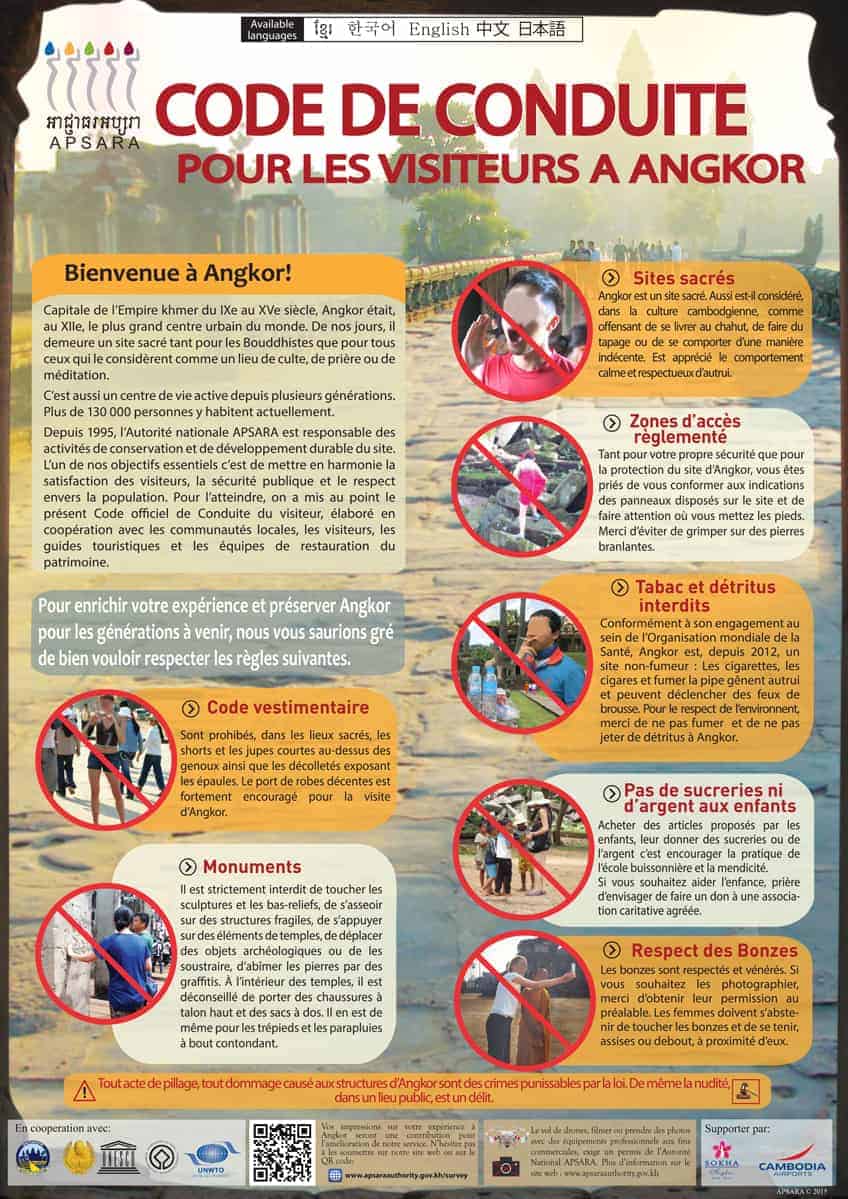The ultimate manifestation of Khmer architectural ingenuity, the one and only Angkor Wat is the largest religious building in the world and the perfect blend of symbolism and symmetry. Almost every square inch of this immense complex is covered in intricate carvings and designs. So it's worth reading up a little about this iconic temple and starting planning your Angkor temples adventure, which is on the bucket list.
The majestic temples of Angkor in northwest Cambodia are a UNESCO World Heritage Site and top the list of historic sites to visit for many travelers to Southeast Asia. Est.
What is Angkor Wat?
Angkor Wat, built by Suryavarman II (r 1113-50), is the earthly representation of Mount Meru, the Mount Olympus of the Hindu faith, and the home of the ancient gods. The Cambodian god-kings of old all strove to improve on the structures of their ancestors in terms of size, scale and symmetry, resulting in what is considered the largest religious building in the world.

The temple is the heart and soul of Cambodia and a source of national pride. Unlike other monuments at Angkor, it has never been abandoned to the elements and has been used virtually continuously since its construction.
The particularities of Angkor Wat
A strange orientation
Symbolically, west is the direction of death, leading many scholars to conclude that Angkor Wat must have existed primarily as a tomb. This idea was supported by the fact that the temple's magnificent bas-reliefs were designed to be viewed counterclockwise, a practice that has precedents in ancient Hindu funerary rites. However, Vishnu is also often associated with the west, and it is now commonly accepted that Angkor Wat most likely served as both a temple and mausoleum to Suryavarman II.
If Suryavarman II planned to make Angkor Wat his funerary temple or mausoleum, he was never buried there, as he died in combat during a failed expedition to subdue the Dai Viet (Vietnamese).
The celestial nymphs
Angkor Wat is famous for its 3,000 alluring apsaras (celestial nymphs) carved on its walls. Each one is unique, and there are 37 different hairstyles for budding stylists to discover.

Many of these exquisite apsaras were damaged during temple cleaning with chemicals in the 1980s, but are being restored by teams from the German Apsara Conservation Project. Bat urine and droppings also degrade restored sculptures over time.
Bas-reliefs
Visitors to Angkor Wat are struck by its imposing grandeur and, up close, by its fascinating decorative ornaments. The central temple complex is surrounded by a series of intricate and stunning bas-reliefs, 800 meters long, which depict historical events and stories from mythology.
What does “Angkor Wat” mean?
Eleanor Mannikka explains in her book Angkor Wat: Time, Space and Kingship, that the spatial dimensions of Angkor Wat correspond to the lengths of the four ages (Yuga) of classical Hindu thought. Thus, the visitor to Angkor Wat who takes the causeway to the main entrance and crosses the courtyards to the last main tower, which once contained a statue of Vishnu, metaphorically travels to the first age of creation of the universe.
Like the other mountain temples of Angkor, Angkor Wat also reproduces the spatial universe in miniature. The central tower is Mount Meru, with its surrounding smaller peaks, bounded in turn by continents (the lower reaches) and oceans (the moats). The seven-headed naga (mythical serpent) becomes a symbolic rainbow bridge allowing humanity to reach the abode of the gods.
How was Angkor Wat built?
The sandstone blocks from which Angkor Wat was built were quarried from the sacred mountain of Phnom Kulen, more than 50 km away, and lowered on rafts along the Siem Reap River. The logistics of such an operation are mind-boggling and require the work of thousands of people. According to inscriptions, the construction of Angkor Wat required 300,000 workers and 6,000 elephants. It has not been fully completed.
Getting your bearings at Angkor Wat
1. The Moats

Angkor Wat is surrounded by a 190 meter wide moat, which forms a giant rectangle measuring 1.5 km by 1.3 km. To the west, a sandstone causeway crosses the moat.
2. Exterior wall
The rectangular exterior wall, which measures 1025 m by 800 m, has a door on each side, but the main entrance, a 235 m wide porch richly decorated with sculptures, is on the west side.

The right tower houses a statue of Vishnu, 3.25 m high and carved from a single block of sandstone. Vishnu's eight arms hold a mace, a spear, a discus, a conch and other objects.
We can also see strands of hair lying around. These are offerings from young people who are preparing to get married and from pilgrims who thank the luck they have had.
3. The Avenue

The avenue, 475 meters long and 9.5 meters wide, is lined with naga balustrades. It leads from the main entrance to the central temple, passes between two graceful libraries and two pools, the northern one being a popular place to watch the sunrise.
4. The Central Complex
The central temple consists of three floors, each in laterite, which demarcate a square surrounded by galleries interconnected in a complex way.

The Gallery of a Thousand Buddhas (Preah Poan) housed hundreds of Buddha images before the war, but many of them were removed or stolen, leaving only the handful seen today.
5. The Towers

The corners of the second and third floors are marked by towers, each topped with symbolic lotus bud-shaped towers. The central tower, which rises 31 meters above the third level and 55 meters above the ground, gives the whole its sublime unity.
6. The Next Level
The stairs leading to the upper level are immensely steep, as reaching the realm of the gods was no easy feat.

Also known as Bakan Sanctuary, the upper level of Angkor Wat is open to a limited number of people per day, with a queuing system.
The code of conduct for visiting Angkor Wat
As the temples of Angkor represent a sacred religious site for the Khmer people, visitors are asked to dress modestly. It is not possible to visit the highest level of Angkor Wat without having your arms covered and shorts that go down to your knees.

Local authorities have provided visitors with a “code of conduct” and a video to encourage them to dress appropriately. They also remind tourists not to touch, sit or climb on ancient structures, to be careful of prohibited areas and to be respectful to the monks.
Plan your visit to Angkor Wat
Best time to go: it is possible to visit Angkor Wat at any time of the year , but high season is between November and February, when the weather is dry and cooler, although it is still warm for most visitors. The best time of day is sunrise, when it's cooler but more crowded, or lunch time, when most tour groups are in town. The temple is also very popular at sunset, when it takes on a soft glow in the warm light of the setting sun.
Duration of the visit: allow at least three hours to explore the entire complex, but rather half a day if you want to discover every nook and cranny.
Opening hours: Angkor Wat opens at 5 a.m. for visitors who wish to watch the sunrise from this emblematic place. The upper level (Bakan shrine) is only open from 7:30 a.m. Angkor Wat closes at 6 p.m. and is currently not open at night.
Costs: a pass for the Angkor temples costs around 30 Euros for a day, 60 Euros for three days (usable over a period of 10 days) and approximately 70 Euros for a week (usable over a period of one month).
Where to stay? Siem Reap is only 7 km from Angkor Wat and is the starting point for exploring the temples.
Getting around: you have the choice between motorcycles (motorcycle taxis) to one person, tow-motorcycles (tuk-tuks) for two people, and private cars or minivans for families or small children groups.
Eco-friendly options include mountain bikes or electric bikes. Guided tours can also be organized in Siem Reap.
A new cycle path connects the town of Siem Reap to the many temples of Angkor. Guided tours can also be organized by hotels and tour operators in Siem Reap.









































